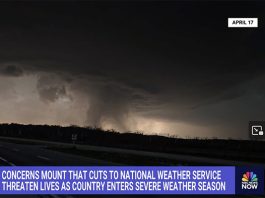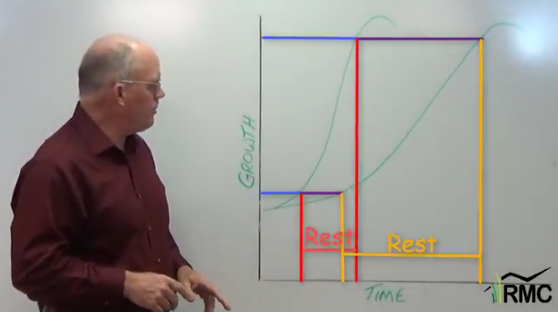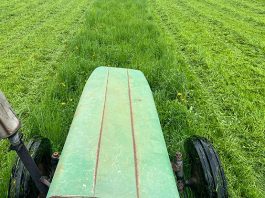 My wife has been splitting open persimmon seeds. For those who don’t know what this is supposed to mean – it is an old wives’ tale method of predicting the upcoming winter weather. For clarity, I’m not saying my wife is old, but she does like to read persimmon seeds! Traditionally, you split the persimmon seed open to reveal the whitish sprout inside. It may require a bit of imagination, but they are supposed to resemble a spoon, a fork or a knife. The spoon is said to predict lots of heavy, wet snow. A fork means you should expect a mild winter. A knife indicates an icy, windy and bitter cold winter. Surprisingly or luckily, it is often correct. She split open several seeds this year – all were spoons.
My wife has been splitting open persimmon seeds. For those who don’t know what this is supposed to mean – it is an old wives’ tale method of predicting the upcoming winter weather. For clarity, I’m not saying my wife is old, but she does like to read persimmon seeds! Traditionally, you split the persimmon seed open to reveal the whitish sprout inside. It may require a bit of imagination, but they are supposed to resemble a spoon, a fork or a knife. The spoon is said to predict lots of heavy, wet snow. A fork means you should expect a mild winter. A knife indicates an icy, windy and bitter cold winter. Surprisingly or luckily, it is often correct. She split open several seeds this year – all were spoons.
Now, I would not bank on that information, but it is a reminder that we need to be prepared ahead of time for whatever the weather decides to throw at us.
Each year is a little different, so strategy and planning must be adjusted as needed as the season progresses. It is also important to have a game plan on how to deal with unplanned circumstances.
Staging forages through the year
I like to try and think ahead of the next livestock move – often calling it staging. Early in the season, the term staging is easier to understand. It is the planned and predicted, yet adjustable, allocations for a set time frame. During spring growth, you want to keep forage as vegetative as possible to provide quality feed for grazing animals and to maintain that solar panel in order to increase forage yield as much as possible with adequate rest. A lot of that is timing of when to go back to the first paddock and start over. It requires a watchful eye to know when to do that too.
By late summer, and into early fall, the growing days for forages start getting numbered. The impact of this is intensified around the Sept. 22 when fall equinox kicks in – daylight is now less than 12 hours per day. This slight change in daylight does slow forage growth. Staging now has more to do with allocating out grazable forage/fodder that is present, allowing as much time as possible for plants to continue to grow to get maximum yield to graze later, and knowing when to graze what in order to maximize all of it and graze longer while meeting livestock nutritional needs.
What should you be grazing right now?

If you still need to stockpile forage or rest pasture, then annuals or crop residue can certainly work. Corn stock residue can provide at least 30 days of decent grazing after harvest date. After 30 days, the quality of that fodder will decrease quickly and only maintenance animals should really graze them. An exception is when higher quality annuals have been planted into the stalks, and if ready to graze, they can raise the nutritional value.
If you have annuals such as oats and brassicas that were planted a few weeks ago, some of those can now be grazed. You would not want to graze them too hard if you don’t have to; you will want to save some for later so leaving sufficient residual is important, ideally about four inches.
Some areas still have an abundance of forage available for grazing. Deferring this forage for later use provides an opportunity for more growth in the declining daylight days and more opportunity for grazing later. Once we have a good killing freeze, which will be coming soon in the northern part of the state, you can feel comfortable to start grazing stockpiled forages without worrying too much about stressing the plant too much. You want the plant to build both the top and new roots to store energy for next spring. If you continue grazing into late fall the plant will be weakened some next spring.
Forages that lose value should be grazed first.
As we proceed later into October and approach November, forages that don’t hold their value very well, or for very long, need to be grazed first. Orchardgrass, hay aftermath, perennial ryegrass and even smooth brome grass once it has gone dormant should be first on the menu. I would then move back to any annual small grains if soil conditions permit.
The backbone dominating stockpiled forage for the rest of the winter here in the Midwest is most certainly tall fescue. Whether you have old Kentucky 31 or an endophyte-friendly tall fescue like Max-Q, if it is mostly new fall regrowth it will hold its nutritional value better than anything for as long as it lasts. The fescue should be the last thing normally grazed in the winter. So save it for late use. It will hold up to some abuse, maintain decent quality and is basically standing hay.
Be careful with summer annuals after frost
Summer annual warm-season grasses, such as sudangrass or sorghum-sudangrass hybrids and Johnsongrass often have some late season value, but caution should be taken in utilizing these forages this time of year. Once frosted, these forages can produce a cyanide-containing compound commonly called prussic acid, the same compound they produce anytime they’re stressed.
Remove livestock from these forages for 10-14 days to allow for the forages to “dry down” and the prussic acid to dissipate before grazing again. Frosted sudangrass or sorghum-sudangrass hybrids can be harvested for balage right after being frosted and later fed if they are allowed their normal fermentation process time period of three or four weeks.
Frosted areas may only be “pockets” in a field to start with. Any regrowth from the base of the plant after a frost can also be very high in prussic acid. If in doubt about nitrates or prussic acid – test before feeding or grazing!
Prepare for mud.

Last year most producers would have appreciated a little more free concrete, or rather, frozen ground. It is best to be prepared. Mud is certainly worse around feeding, watering and other concentrated areas. One of the best solutions for these concentrated areas is to install a heavy use protection area or HUAP if you like acronyms, or more simply, rock pads. These areas are fairly simple to construct and better yet, very economical and one of those items I consider “money well spent” for animal well-being.
The rock pad should ideally be placed in a well-drained area. Sometimes you are better off to consider moving your winter-feeding area if drainage is an issue. The ideal site would also have wind protection associated with it. Sometimes, this could be just a row of strategically placed round bales. The pad should also be located away from major drainage areas and water bodies, so you don’t have to worry about contaminating them with possible runoff. You would certainly not want to create a resource concern with these areas, so they need to be located appropriately, managed properly and be a part of a planned system. Information on how to build a rock pad can be found at any USDA service center.
Check your feed balance once more!
I would strongly recommend doing an animal to forage/hay/feed balance right now to see how you are set for the winter. Better to figure out now that you may be short than later when finding and moving hay/feed is more difficult. In dry areas, consider trying to buy yourself a little time for more forage regrowth by feeding some hay or other stored feed now to maximize any potential growth while you can. Here’s my article on that to help you out:
Are You Ready For Winter? Here’s How Much Feed You’ll Need and How to Serve It Up
Remember, it’s not about maximizing a grazing event, but maximizing a grazing season! Keep on grazing!




